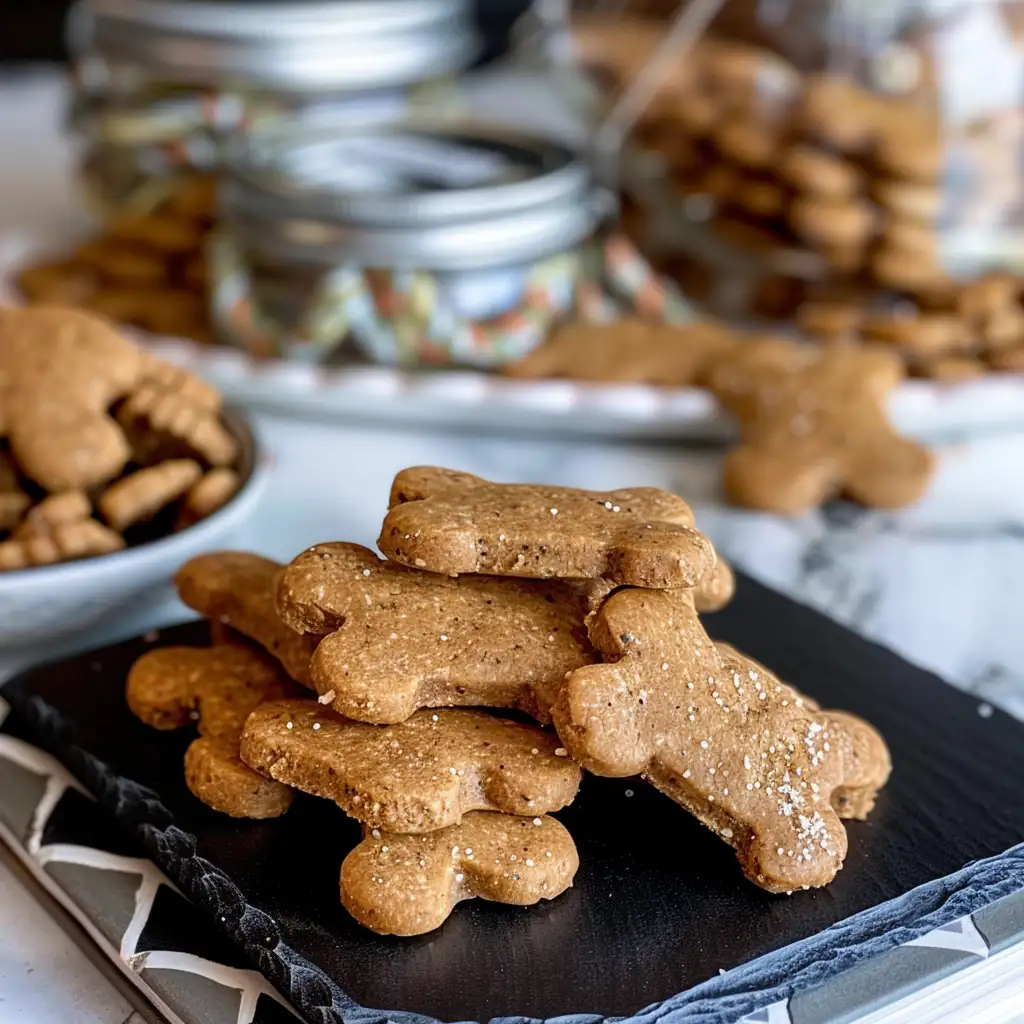Introduction
Importance of Homemade Dog Treats
Making homemade dog treats is not only a fun and rewarding activity but also a way to ensure your furry friend gets the best nutrition. With the rise in awareness about dog nutrition, many pet owners are turning to homemade options to avoid the potentially harmful additives and preservatives found in commercial treats.
Benefits of Making Your Own Dog Treats
- Control Over Ingredients: When you make your own treats, you have full control over the ingredients used. This means you can avoid any harmful substances and ensure your dog is getting the nutrients they need.
- Cost-Effective: Making dog treats at home can be more economical in the long run compared to buying expensive, high-quality commercial treats.
- Customization: Homemade treats can be tailored to your dog’s specific dietary needs, preferences, and allergies.
By taking the time to prepare homemade dog treats, you can contribute significantly to your dog’s overall health and well-being. For more information on safe ingredients for dog treats, refer to this helpful guide on dog nutrition.
Essential Ingredients for Homemade Dog Treats
Common Ingredients
When preparing homemade dog treats, it’s essential to use ingredients that are safe and beneficial for your pet. Some commonly used ingredients include:
- Peanut Butter: Ensure it is free from xylitol, which is toxic to dogs.
- Pumpkin: High in fiber and excellent for digestion.
- Sweet Potatoes: Rich in vitamins and minerals.
- Oats: A good source of fiber and protein.
- Chicken and Beef: Lean sources of protein.
Nutritional Benefits
Each ingredient in homemade dog treats offers specific nutritional benefits:
- Peanut Butter: Provides healthy fats and protein.
- Pumpkin: Supports digestive health and is low in calories.
- Sweet Potatoes: Packed with vitamins A, B6, and C, as well as manganese.
- Oats: Help maintain healthy skin and coat.
- Chicken and Beef: Essential for muscle development and repair.
Incorporating these ingredients ensures that your dog gets a balanced and nutritious treat. For additional ideas on healthy ingredients, check out this guide on healthy homemade dog treats.
Ingredients to Avoid
While making homemade dog treats, it’s crucial to avoid ingredients that can be harmful to dogs. Some of these include:
- Chocolate: Contains theobromine, which is toxic to dogs.
- Grapes and Raisins: Can cause kidney failure.
- Onions and Garlic: Can lead to gastrointestinal upset and red blood cell damage.
- Artificial Sweeteners: Especially xylitol, which is highly toxic to dogs.
- Alcohol: Even small amounts can be dangerous.
By avoiding these ingredients, you ensure that your homemade treats are safe and healthy for your pet. For more detailed information on harmful ingredients, refer to this list of safe and unsafe ingredients for dog treats.
Conclusion
Creating homemade dog treats is a wonderful way to show love and care for your pet. By using healthy, safe ingredients and avoiding harmful ones, you can make delicious and nutritious treats that your dog will enjoy.
Homemade Dog Treats Recipe
Description
Delicious and healthy homemade dog treats made with natural ingredients. Perfect for spoiling your furry friend!
Ingredients
- 1 cup pumpkin puree
- 2 eggs
- 1/3 cup peanut butter (natural, no xylitol)
- 2 cups whole wheat flour
- 1/2 teaspoon cinnamon (optional)
Instructions
- Preheat Oven: Preheat your oven to 350°F (175°C). Line a baking sheet with parchment paper or a silicone baking mat.
- Mix Wet Ingredients: In a large bowl, combine the pumpkin puree, eggs, and peanut butter. Stir until smooth.
- Add Dry Ingredients: Gradually add the whole wheat flour and cinnamon (if using) to the wet ingredients. Stir until the dough is well combined and forms a ball.
- Roll Out Dough: Lightly flour a clean surface and roll out the dough to about 1/4 inch thickness.
- Cut Out Treats: Use cookie cutters to cut out shapes from the dough. Place the cut-out treats on the prepared baking sheet.
- Bake: Bake in the preheated oven for 20-25 minutes, or until the treats are firm and golden brown.
- Cool: Allow the treats to cool completely on a wire rack.
- Store: Store the treats in an airtight container for up to 2 weeks, or freeze for longer storage.
Notes
- Ensure the peanut butter used is free from xylitol as it is toxic to dogs.
- Store treats in an airtight container to maintain freshness.
- You can freeze the treats for longer storage.
Details
- Prep Time: 10 minutes
- Cook Time: 20-25 minutes
- Total Time: 30-35 minutes
- Yield: Approximately 30-40 treats (depending on size)
- Category: Dog Treats
- Method: Baking
- Cuisine: Pet Cuisine
- Diet: Dog-Friendly
Nutritional Facts (Per Treat)
- Calories: 35
- Protein: 1g
- Fat: 1g
- Carbohydrates: 5g
- Fiber: 1g
- Sugar: 0g
These homemade dog treats are not only easy to make but also provide a healthy alternative to store-bought snacks, ensuring your pet gets the best. Enjoy baking and sharing these with your furry companion!
Storage and Shelf Life
Proper Storage Methods
To ensure homemade dog treats remain fresh and safe to consume, proper storage is essential. Store baked treats in an airtight container to prevent moisture from getting in. For longer shelf life, consider refrigerating or freezing the treats.
Shelf Life of Different Treats
The shelf life of homemade dog treats can vary based on ingredients and storage methods:
- Baked Treats: Typically last up to 1-2 weeks at room temperature.
- Refrigerated Treats: Can last up to 3-4 weeks.
- Frozen Treats: Can be stored for up to 3 months.
For more detailed information on storage methods, refer to this guide on safe storage practices for homemade dog treats.
Customizing Recipes
Adjusting for Dietary Needs
Every dog has unique dietary requirements. Customizing homemade dog treats allows you to cater to these needs. For dogs with allergies, consider using alternative flours like rice or coconut flour. If your dog needs a low-fat diet, opt for lean protein sources.
Adding Supplements
Enhance the nutritional value of your treats by adding supplements. Popular additions include:
- Fish Oil: For a shiny coat.
- Glucosamine: To support joint health.
- Probiotics: For digestive health.
For more information on safe ingredients for dog treats, refer to this helpful guide on dog nutrition.
Safety Tips
Safe Handling of Ingredients
When making homemade dog treats, it’s important to practice safe handling of ingredients. Always wash your hands and clean all utensils thoroughly before and after preparation. Ensure that meats are cooked properly to avoid bacterial contamination.
Avoiding Harmful Ingredients
Certain ingredients can be harmful or even toxic to dogs. Avoid using:
- Chocolate: Contains theobromine, toxic to dogs.
- Grapes and Raisins: Can cause kidney failure.
- Onions and Garlic: Harmful to red blood cells.
For a comprehensive list of harmful ingredients, check out this resource on unsafe ingredients for dog treats.
Economical Benefits
Cost Comparison with Store-bought Treats
Making homemade dog treats can be much more cost-effective compared to buying premium store-bought treats. While initial ingredient costs might seem high, the long-term savings are significant.
Buying Ingredients in Bulk
Purchasing ingredients in bulk can further reduce costs. Look for wholesale options for common ingredients like oats, peanut butter, and flour. Not only does this save money, but it also ensures you always have the ingredients on hand to make fresh treats.
Creating homemade dog treats not only ensures your pet’s health and safety but also provides significant cost savings over time.
FAQs Section
How long do homemade dog treats last?
The shelf life of homemade dog treats depends on the ingredients used and how they are stored. Generally, baked treats can last up to 1-2 weeks at room temperature if stored in an airtight container. Refrigerated treats can last 3-4 weeks, while frozen treats can be stored for up to 3 months. For more details on storing treats, refer to this guide on safe storage practices for homemade dog treats.
Can I use flour in dog treats?
Yes, you can use flour in homemade dog treats. However, it’s important to choose the right type of flour. Whole wheat flour is commonly used, but for dogs with gluten sensitivities, alternatives like rice flour, oat flour, or coconut flour are great options. These flours are not only safe but also add nutritional value to the treats. For more information on safe ingredients, check out this guide on dog nutrition.
What are the best treats for dogs with allergies?
For dogs with allergies, it’s crucial to avoid common allergens like wheat, corn, and soy. Instead, opt for treats made with hypoallergenic ingredients such as:
- Sweet potatoes
- Pumpkin
- Oats
- Lean meats like chicken or turkey
Customizing treats to exclude known allergens can help ensure your dog enjoys their snacks without adverse reactions. For a comprehensive list of safe ingredients, refer to this resource on safe ingredients for dog treats.
How can I make my dog treats crunchy?
To make homemade dog treats crunchy, follow these tips:
- Bake at a low temperature: This helps remove moisture without burning the treats.
- Extend baking time: After the initial baking, leave the treats in the oven as it cools down to further dry them out.
- Use less moisture in the dough: A drier dough results in crunchier treats.
Crunchy treats are great for dogs’ dental health as they help clean teeth and gums. For more ideas on making crunchy treats, visit this helpful guide on dog nutrition.
Conclusion
Recap of Benefits
Making homemade dog treats offers numerous benefits, including control over ingredients, cost savings, and the ability to customize treats to meet your dog’s specific dietary needs. Homemade treats can be healthier and safer compared to commercial options, as you avoid harmful additives and preservatives.
Summary of Key Points
- Control Over Ingredients: Ensure all ingredients are safe and nutritious.
- Cost-Effective: Save money compared to buying high-quality commercial treats.
- Customization: Tailor treats to your dog’s preferences and dietary requirements.
Encouragement to Try Homemade Treats
Creating homemade dog treats is a rewarding endeavor that can enhance your dog’s health and happiness. With a variety of recipes and ingredients available, you can easily make treats that your dog will love. So, roll up your sleeves and start baking – your furry friend will thank you for it!




